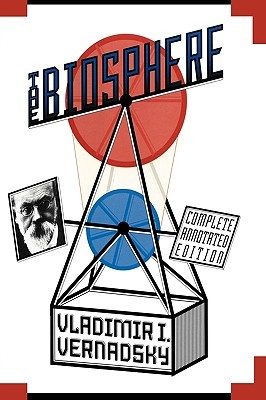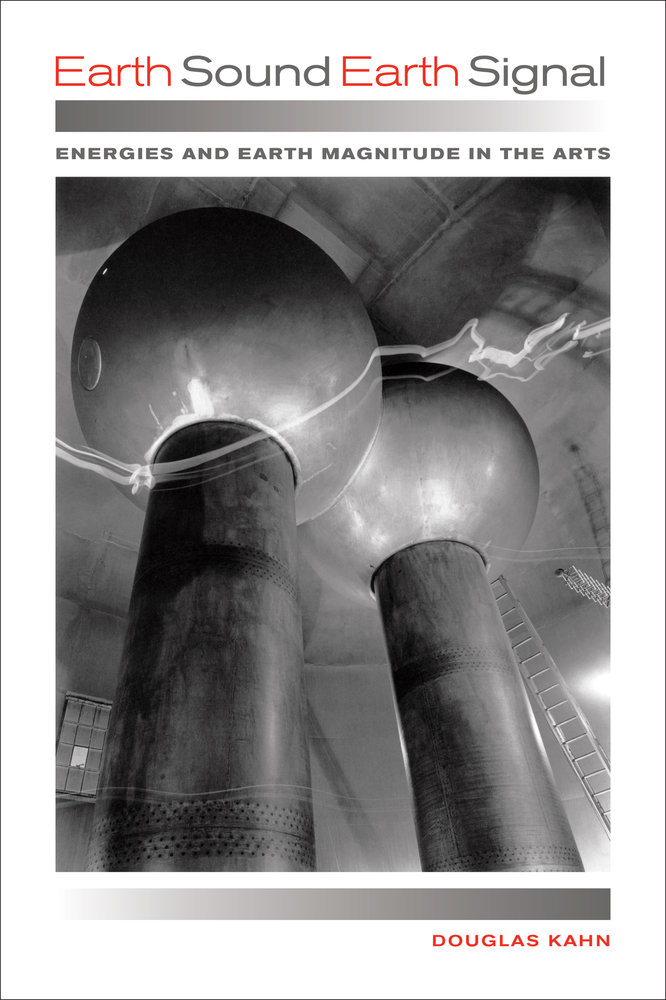Vladimir Vernadsky: The Biosphere (1926–) [RU, ES, EN]
Filed under book | Tags: · animal, atmosphere, biochemistry, biology, biosphere, chemistry, climate, earth, energy, environment, geochemistry, geology, land, life, light, ocean, plants, science, space, sun, time, water, weather

“First published in 1926 but long neglected in the West, Vladimir I. Vernadsky’s The Biosphere revolutionized our view of Earth. Vernadsky teaches us that life has been the transforming geological force on our planet. He illuminates the difference between an inanimate, mineralogical view of Earth’s history, and an endlessly dynamic picture of Earth as the domain and product of living matter to a degree still poorly understood.
The 1998 edition, which is the first English translation of the entire text, features contributions by Mark A. S. McMenamin, Professor of Geology at Mount Holyoke College, who has written extensive annotations to explain the structure of Vernadsky’s arguments and their modern relevance, and Jacques Grinevald, an authority on the idea of the biosphere, who penned an introduction that places the book in historical context.”
English edition
Foreword by Lynn Margulis, Mauro Ceruti, Stjepko Golubic, Ricardo Guerrero, Nubuo Ikeda, Natsuki Ikezawa, Wolfgang E. Krumbein, Andrei Lapo, Antonio Lazcano, David Suzuki, Crispin Tickell, Malcolm Walter, Peter Westbroek
Introduction by Jacques Grinevald
Translated by David B. Langmuir
Revised and Annotated by Mark A.S. McMenamin
Publisher Copernicus Books, 1998
A Peter N. Nevraumont book
ISBN 9781461272649
192 pages
Commentary on the concept (Alexej M. Ghilarov, The Quarterly Review of Biology, 1995)
Commentary on the translations (Mercè Piqueras, International Microbiology, 1998)
Publisher (EN)
Biosfera i noosfera (Russian, 1926/1989)
La Biosfera (Spanish, trans. María Victoria López Paño and Luis Gutiérrez Andrés, 1997)
The Biosphere (English, trans. David B. Langmuir, 1998)
Douglas Kahn: Earth Sound Earth Signal: Energies and Earth Magnitude in the Arts (2013)
Filed under book | Tags: · acoustics, art, art history, cold war, computer music, earth, electromagnetism, electronic music, energy, experimental music, geophysics, hearing, history of science, light, media history, music history, nature, noise, perception, radio, science, sound, sound art, sun, technology, telegraphy, telephone

“Earth Sound Earth Signal is a study of energies in aesthetics and the arts, from the birth of modern communications in the nineteenth century to the global transmissions of the present day. Douglas Kahn begins by evoking the Aeolian sphere music that Henry David Thoreau heard blowing along telegraph lines and the Aelectrosonic sounds of natural radio that Thomas Watson heard through the first telephone; he then traces the histories of science, media, music, and the arts to the 1960s and beyond. Earth Sound Earth Signal rethinks energy at a global scale, from brainwaves to outer space, through detailed discussions of musicians, artists and scientists such as Alvin Lucier, Edmond Dewan, Pauline Oliveros, John Cage, James Turrell, Robert Barry, Joyce Hinterding, and many others.”
Publisher University of California Press, 2013
ISBN 0520956834, 9780520956834
343 pages
Reviews: Alessandro Ludovico (Neural, 2013), Christopher Haworth (Organised Sound, 2015), Adam Trainer (Continuum, 2015).
PDF (removed on 2014-3-19 upon request of the publisher)
Comment (0)Le concept d’information dans la science contemporaine (1965) [French]
Filed under proceedings | Tags: · communication, computing, cybernetics, information, information theory, machine, mathematics, philosophy, science

“The proceedings from the Sixth Symposium at Royaumont in 1962 were titled Le concept d’information dans la science contemporaine [The Concept of Information in Contemporary Science] and were published three years later in Paris by Les Éditions de Minuit.
In attendance were Gilbert Simondon, Norbert Wiener, Martial Gueroult, Giorgio de Santillana, Lucien Goldmann, Benoit Mandelbrot, René de Possel, Jean Hyppolite, André Michel Lwoff, Abraham Moles, Ferdinand Alquié, Henryk Greniewski, Helmar Frank, Jiri Zeman, François Bonsack, Louis Couffignal, Albert Perez, Maurice de Gandillac, Ladislav Tondl, Gilles-Gaston Granger, and Stanislas Bellert, among others.
Simondon was a very active organizer and introduced Wiener. The collection is fascinating for a number of reasons; most striking, perhaps, is the fact that a prominent Marxist (Goldmann) and a brilliant mathematician (Mandelbrot) were given equal opportunity to talk philosophically about the concept of information. Mathematicians like Mandelbrot and Wiener were given the same stage as philosophers like Simondon and Hyppolite.
Some of the papers are pretty scientific, but most of them are not. What you get is a collection of papers given and discussed (the Q & As are included and are revealing) by some of the individuals who heavily influenced Deleuze and a number of other French philosophers. This is an incredibly revealing volume and I will eventually work hard to translate some of the papers that are included.
Simondon’s paper, ‘L’Amplification dans les processus d’information’, was not included in the proceedings (only the abstract is provided at the very end of the book, along with the topic of Wiener’s response to Simondon), but was published and is available in the collection of his papers titled Communication and Information: Courses and Conferences (La Transparence, 2010).” (from a blog post by Andrew Iliadis)
Publisher Les Éditions de Minuit, Paris, 1965
425 pages
via Andrew Iliadis, HT babyalanturing
Review: D. Gabor (The British Journal for the Philosophy of Science, 1966, EN).
PDF (36 MB, updated on 2021-3-28)
multiple formats (Internet Archive)

